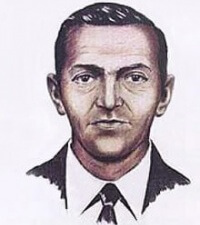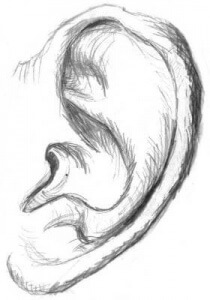November 24 is D.B. Cooper Day
 On November 24, 1971, a man who identified himself as Dan Cooper boarded a Northwest Airlines flight from Portland, Oregon to Seattle, Washington. He was wearing a suit, had no discernable accent, drank bourbon and soda and smoked several cigarettes. He also handed a flight attendant an exceedingly polite note informing her he had a bomb and intended to hijack the plane.
On November 24, 1971, a man who identified himself as Dan Cooper boarded a Northwest Airlines flight from Portland, Oregon to Seattle, Washington. He was wearing a suit, had no discernable accent, drank bourbon and soda and smoked several cigarettes. He also handed a flight attendant an exceedingly polite note informing her he had a bomb and intended to hijack the plane.
He then held the passengers and crew hostage while he negotiated with the FBI, demanding $200,000 in $20 bills and four parachutes. Upon landing, the ransom and parachutes were delivered and Cooper released the passengers. Three pilots and a flight attendant stayed onboard and took off from Seattle with instructions for all to stay in the cockpit and to maintain low airspeed and an altitude of 10,000 feet.
About 45 minutes after takeoff, a light went on in the cockpit to indicate that the rear stairs had been lowered. When the plane landed with the stairs down, the FBI found two parachutes and, on Cooper’s seat, a black clip-on tie. It was assumed Cooper had jumped. We call it an assumption only because the mystery surrounding what followed calls everything into question.
Cooper was never found, in spite of intense searches by ground and air. For all anyone knew, he might’ve tossed out the money, dropped the chutes and fallen into the talons of a giant bird of prey. None of the money has been spent. (It was marked.) In 1980, three bundles of bills totaling $5,800 were discovered under a couple inches of sand on the Columbia River. The serial numbers matched those on the ransom money.
To this day, theories abound but no other confirmed evidence exists. Would “Dan Cooper” be annoyed or amused that, after police interviewed a man named D.B. Cooper in the early days of the investigation, the press and public have misidentified him ever since?
Over time, the unanswered questions about this case have obscured the fact that the man was a hijacker, turning him into something of a folk hero. The legend of the well-spoken man who robbed the government and vanished into thin air fires the imagination. Is he sipping mai-tais on a beach somewhere? Is he drinking a coffee next to us in a diner?
New people are introduced to the story every year. A popular theory that the series Mad Men would end with Don Draper becoming D.B. Cooper turned out to be completely wrong but only added to the myth’s allure. Will we ever find out what really happened? Probably not; but we’ll always have the legend of (Dan) D.B. Cooper.
![]()





 It’s difficult to find any time in the early 18th century when England and Spain weren’t at odds or war. At various points, diplomats were given the miserable task of trying to impose order. The Treaty of Utrecht of 1713 was one such attempt, signed as the War of Spanish Succession begun in 1700 wound down.
It’s difficult to find any time in the early 18th century when England and Spain weren’t at odds or war. At various points, diplomats were given the miserable task of trying to impose order. The Treaty of Utrecht of 1713 was one such attempt, signed as the War of Spanish Succession begun in 1700 wound down.